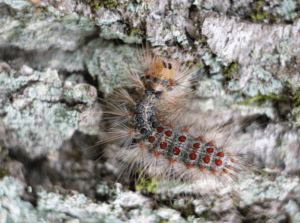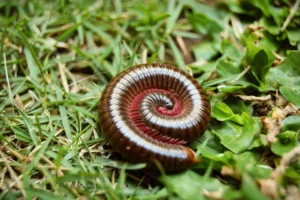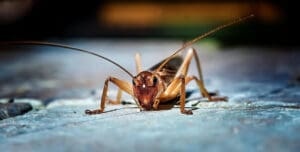
Boxelder bugs are a common household pest and can quickly become a nuisance once they invade homes in search of shelter and warmth. These insects are instantly recognizable due to their black bodies that are marked with splashes of red and orange. Boxelder bugs gather together in large groups and can be spotted on sunny windows and walls before they find their way inside. While these creatures are not harmful to properties, people and pets, their presence can be unpleasant and somewhat overwhelming.
In this article, we take a closer look at all you need to know about boxelder bugs, from their behavior to prevention and safe removal strategies for your home and business.
What Is a Boxelder Bug?
Boxelder bugs are distinct insects that have become known for their seasonal presence and striking appearance. Adult boxelder bugs are 12 to 14 millimeters in length and have a flat and long body shape. As stated previously, they are mostly black and marked with red or orange along the wings and thorax. Juvenile or nymph bugs are much smaller and are also bright red in color, and will gradually develop black markings as they grow.
To get a bit more scientific, boxelder bugs belong to the order Hemipetra, also known as true bugs. They are part of the Rhopalidae family, also referred to as scentless plant bugs. However, in stark contrast to their family name, they actually emit a foul smell when they are crushed and this is used to deter predators.
It is important to note that boxelder bugs are not the same as stink bugs, and are also not aggressive. They do not bite humans but they can become a nuisance when they congregate in large numbers. Boxelder bugs are also most active in warmer months but they seek shelter indoors as the temperature begins to drop in cooler months. They will usually be spotted congregating on the sunny sides of home and have been known to enter buildings through crevices and tiny cracks.
Boxelder bugs are mostly found in North America, particularly close to their host trees. Their preferred habitats include suburban yards, parks and forests - specifically where maple trees can be found.
As their diet is made up of seeds and leaves from boxelder trees, maple trees and ash trees, Boxelder bugs are primarily found in North America. Their preferred habitats include forests, suburban yards, and parks where boxelder and maple trees grow.
These insects don’t cause property damage or damage to plants however, they are a cosmetic pest once they invade homes in large numbers.
Why Do Boxelder Bugs Invade Homes?
Boxelder bugs search for shelter indoors due to their survival instincts and the need to escape the cold - they are cold blooded insects and cannot regulate their body temperature internally. With this in mind, when temperatures drop in late summer and early autumn, boxelder bugs will seek warm and dry shelter. If they are outdoors, they may take refuge under tree bark or within hollow logs. However, in urban and suburban environments, buildings and homes offer a more appealing shelter.
Buildings provide consistent warmth and protection from the elements - and also keep these bugs safe from predators. They often gather in large numbers on sunny structures and the exterior of walls. They will also find entry points such as vents, cracks or gaps around doors and windows in order to make their way inside. Once inside your property, they will find secluded spots in wall voids, attics, basements or behind siding, and will remain inactive throughout the winter.
These bugs do not breed or feed indoors during the cooler months but they may be active on warmer days and emerge into your living spaces which can cause annoyance. This behavior is not harmful but considered a nuisance, especially when they are active in large numbers.
Do Boxelder Bugs Cause Damage?
As stated previously, boxelder bugs are not considered harmful to properties but in large numbers, they can quickly become a nuisance. They do not bite, string or transmit disease and are also not known to cause structural damage to homes. However, for many people, their presence is bothersome as they tend to gather in large groups.
Once they manage to find their way inside your property, they may also wander through your living areas. And while they do not reproduce indoors, their excrement may stain walls and furniture. It is also important to note that once they are crushed, they emit a foul odor which further contributes to their reputation as pests.
The nuisance factor is the primary issue with boxelder bugs. Their seasonal invasions can be overwhelming for homeowners, especially when preventive measures are not in place.
How to Get Rid of Boxelder Bugs
Removing boxelder bugs from homes effectively and securely involves a combination of preventive measures, natural remedies, and pest control methods.
If boxelder bugs are already indoors, physical removal is the safest approach. By using a vacuum cleaner, you are able to collect the bugs without crushing them and causing a mess or odor. Make sure to empty the bag or canister shortly after to avoid reentry into your home. For smaller indoor issues, a simple solution of water mixed with a few drops of dish soap can be sprayed directly onto bugs or around entry points. This may help reduce their presence and discourage further activity.
However, if infestation is large and persistent it is important to contact a professional pest control service. Twin Boro offers expert inspection and tailored pest management solutions. Our team will be able to identify how boxelder bugs have been entering your property, apply treatments that are designed to minimise disruption and recommend long-term prevention strategies.
Preventing Boxelder Bug Infestations
Prevention is key and preventing boxelder bugs from entering your home requires a proactive approach that merges home maintenance, landscaping and natural deterrents.
One of the most effective ways to keep boxelder bugs out of your home is by sealing potential entry points. In order to do this you need to inspect the exterior of your home, notably around windows, doors, vents, and siding. Use caulk to seal cracks and crevices, and install or repair weather stripping and door sweeps to close gaps. Ensure that window screens are intact and that attic and soffit vents are covered with fine mesh.
Another long-term preventative measure is removing or managing host trees. If boxelder trees, especially female ones that produce seeds, are located close to your home, consider removing them or replacing them with non-host species. While this can be a very involved step, it can drastically reduce the local boxelder bug population.
Natural deterrents also offer a non-toxic way to discourage these pests. Spraying areas around doors and windows with a solution of water and dish soap can repel or kill bugs on contact. Essential oils such as tea tree, lavender, and peppermint have also been reported to deter boxelder bugs when sprayed in affected areas. Keep the area around your home clean and free of debris, leaf litter, and clutter, which can provide shelter for boxelder bugs.
Consistent yard maintenance, combined with home sealing and the use of repellents, can significantly reduce the likelihood of an infestation.
Boxelder Bugs: A Nuisance, Not a Threat
Boxelder bugs are mostly a nuisance rather than a true danger. However, their invasions can be a frustration and nuisance for homeowners and businesses.
The Twin-Boro team understands how disruptive boxelder bugs can be. Whether you're dealing with an infestation at home or at your place of business, our residential pest control and commercial pest control services are designed to address the problem quickly and effectively.
We begin with a thorough inspection to identify entry points and nesting areas, followed by safe, targeted treatments to eliminate current populations and prevent future infestations.
Don’t let boxelder bugs take over your space- contact us today for professional support and long-term solutions that keep your home or business pest-free year-round.






